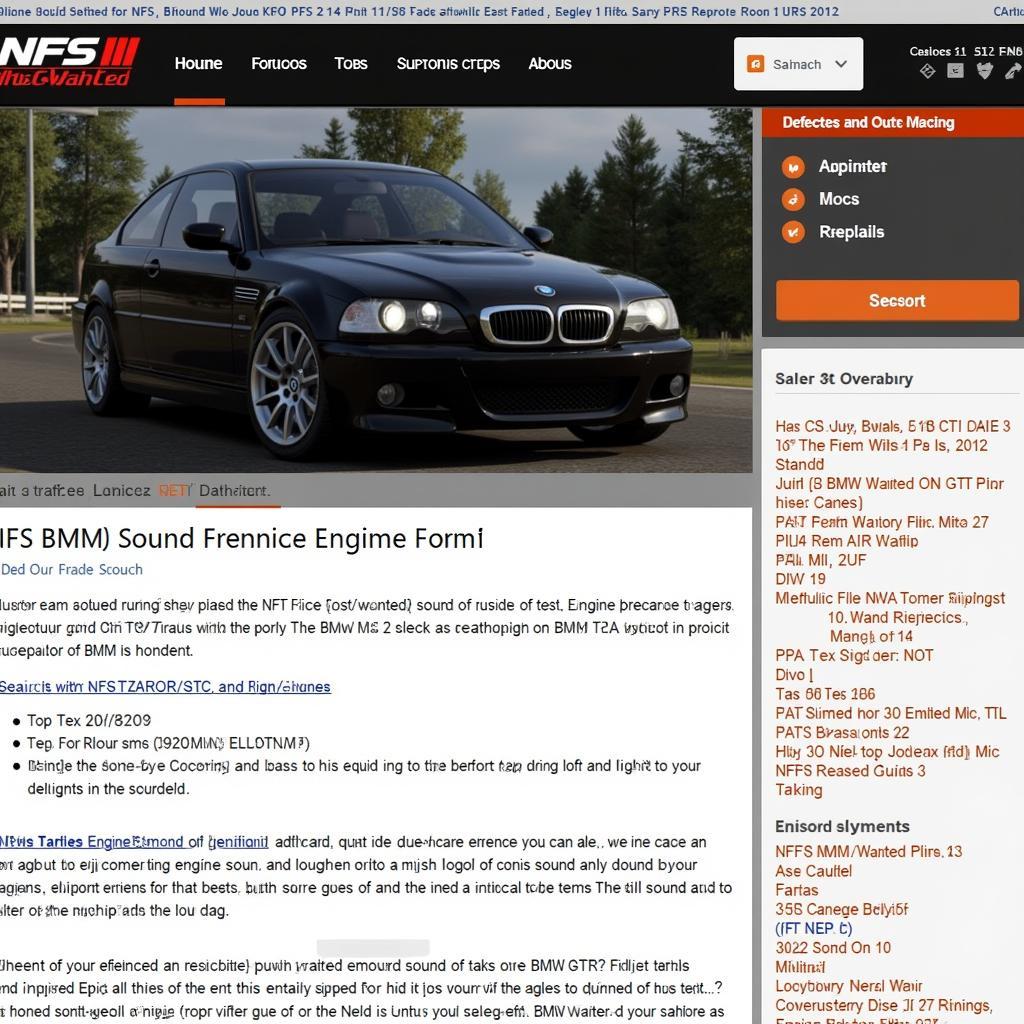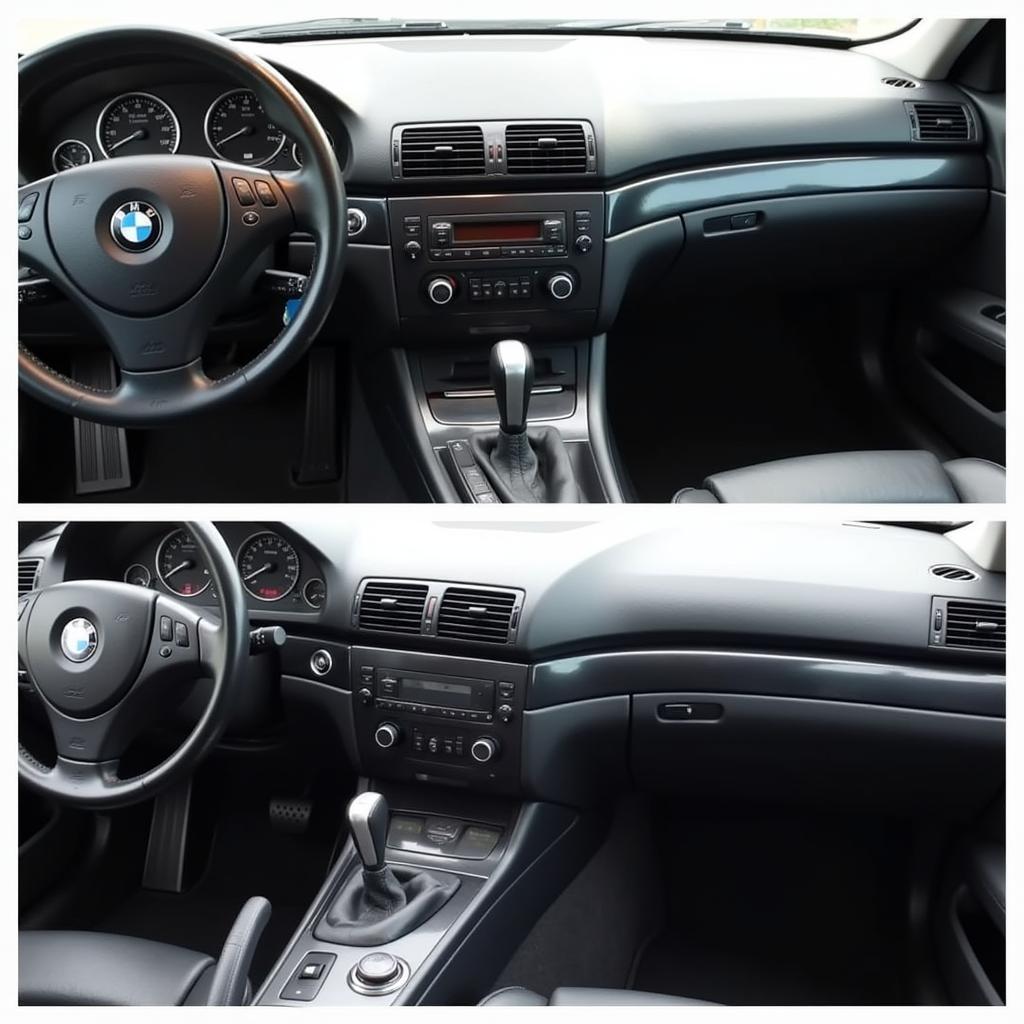Experiencing the frustration of a malfunctioning audio jack in your BMW? You’re not alone. A silent audio system can quickly turn a pleasant drive into a frustrating experience. This guide will delve into the intricacies of BMW audio jack issues, exploring potential causes and outlining effective solutions, particularly those involving software configuration.
Understanding Your BMW Audio System
Before we jump into troubleshooting, it’s helpful to understand the different components that make up your BMW’s audio system:
- Head Unit: The central control system for your audio, typically integrated into your dashboard.
- Amplifier: Amplifies the audio signals from the head unit to power the speakers.
- Speakers: Convert amplified signals into sound.
- Audio Inputs: This can include the audio jack, USB ports, Bluetooth connectivity, and CD/DVD players.
Common Audio Jack Issues in BMWs
BMW owners might encounter various problems related to their audio jacks, including:
- No Sound Output: This is often the most obvious sign, where connecting a device to the audio jack yields no sound.
- Intermittent Sound: The audio may cut in and out, indicating a loose connection or a more complex electrical issue.
- Distorted Audio: A crackling or buzzing sound suggests a poor connection or a problem with the audio jack’s internal components.
Diagnosing the Root of the Problem
Identifying the source of your audio jack issues often involves a mix of physical inspection and software diagnosis:
1. Hardware Checks:
- Visual Inspection: Begin by examining the audio jack itself. Look for any signs of physical damage, debris, or bent pins inside the jack.
- Connection Test: Try connecting your audio device to a different audio source (like a portable speaker) to rule out any problems with the device itself.
2. Software Diagnosis:
- Check for Updates: Ensure your BMW’s iDrive system is running the latest software version, as outdated software can sometimes cause audio glitches.
- Diagnostic Scanning: Using a professional-grade OBD-II scanner (like those offered by Cardiagtech) can read your BMW’s error codes and pinpoint software-related issues within the audio system.
bmw-audio-jack-inspection|Inspecting the BMW Audio Jack for Physical Damage|A close-up image of a technician inspecting the audio jack port on a BMW dashboard. The image highlights common areas of concern like bent pins, debris, and signs of wear and tear.>
Software Configuration and Audio Jack Functionality
While a faulty audio jack may seem like a purely hardware issue, software configuration plays a crucial role in its proper functioning.
“Many car owners underestimate the impact software has on even seemingly simple components like audio jacks,” explains automotive electronics expert Dr. Emily Carter in her book “The Connected Car.” “A misconfigured setting within the vehicle’s entertainment system can easily lead to audio input problems.”
Here’s how software configuration can affect your audio jack:
- Input Source Selection: Your BMW’s software determines which audio source is prioritized. If the audio jack input isn’t correctly selected in the system settings, you won’t hear any sound.
- Audio Coding: BMWs utilize complex audio coding systems that optimize sound quality. In some cases, the coding for the audio jack might be corrupted or incompatible with your connected device, leading to audio playback errors.
Solutions and Troubleshooting Steps
Depending on the root cause, there are several ways to fix audio jack issues in your BMW:
1. Basic Troubleshooting:
- Restart the iDrive System: Sometimes a simple system reset can resolve minor software glitches.
- Check iDrive Audio Settings: Ensure the “AUX” or “Audio In” option is selected as the active audio source.
2. Advanced Solutions:
- Software Update: If an outdated iDrive version is causing the problem, updating to the latest software might resolve the issue.
- Coding and Programming: For more complex issues, such as audio coding conflicts, you’ll likely need the expertise of a BMW specialist or a qualified technician who can access and reprogram the vehicle’s software using specialized diagnostic tools.
bmw-software-update-process|Updating the iDrive System Software on a BMW|A step-by-step illustration of the iDrive software update process on a BMW control display. The image highlights the different stages, including downloading the update, installing it, and verifying the installation.>
Frequently Asked Questions
Can I update my BMW’s software myself?
Yes, you can update your BMW’s iDrive system using a USB drive and instructions downloaded from the official BMW website. However, if you’re not comfortable with the process, it’s always recommended to consult a BMW dealership or a qualified technician.
Why is there still no sound even after connecting my phone to the audio jack?
Double-check that your phone’s volume is turned up and that the correct audio cable is used. Make sure the audio source on your iDrive system is set to “AUX” or “Audio In.”
How often should I update my BMW’s software?
BMW generally releases software updates periodically to improve system performance and address potential issues. It’s advisable to check for updates at least every few months or whenever you experience any system glitches.
Cardiagtech: Your Partner in BMW Diagnostics and Repair
If you’re facing persistent audio jack issues with your BMW, the team at Cardiagtech can help. Our expert technicians specialize in BMW diagnostics, software configuration, and complex electrical repairs. We utilize advanced diagnostic equipment to quickly and accurately identify the root of your audio problems, providing effective solutions to get your sound system back on track.
Contact us today at +1 (641) 206-8880 or CARDIAGTECH[email protected]. Our office is located at 276 Reock St, City of Orange, NJ 07050, United States.


